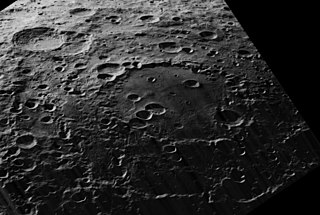
Casatus is a lunar impact crater that is located near the southern limb of the Moon. The north-northeast rim of the crater overlies a portion of the slightly larger crater Klaproth. Along the western rim, Casatus A intrudes somewhat into the interior, producing an inward-bowing rim. To the southeast of Casatus is Newton.

Demonax is a lunar impact crater near the southern limb of the Moon. This location makes the crater difficult to observe due to foreshortening. The crater is also illuminated at a very low angle, when it is in the sunlit side. Demonax lies just to the north of the crater Scott, one of the south polar formations. To the north-northwest is Boguslawsky.

Chappell is a lunar impact crater that is located on the far side of the Moon, in the northern hemisphere just to the north of the crater Debye. This feature is located in a heavily bombarded section of the surface, and much of the outer rim of the crater is overlain by many smaller craters. The northern rim in particular has been almost completely disintegrated, while small craters also overlie the rim to the northwest and southeast. What remains of the rim forms a rounded, somewhat irregular edge to the crater depression.

Charlier is a lunar impact crater that is located on the far side of the Moon. To the south-southeast is the larger crater Kovalevskaya, and northeast of Charlier is Perrine.
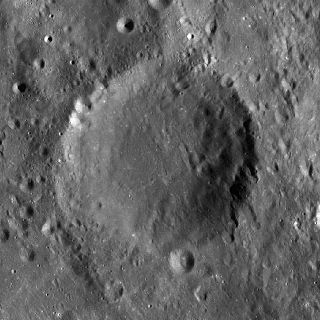
Chaucer is a lunar impact crater that is located to the west of the walled plain Hertzsprung, on the far side of the Moon. It lies to the northwest of the crater Vavilov and east of the Tsander–Kibal'chich crater pair. This is a circular crater with a slightly eroded outer rim. The interior floor is nearly featureless, with only a few tiny craterlets marking the surface. It is named after the writer Geoffrey Chaucer.

Douglass is a lunar impact crater on the far side of the Moon. It lies to the southwest of the crater Frost and south-southwest of the large walled plain Landau.

Evans is the remnant of a lunar impact crater that is located on the far side of the Moon. It lies to the south-southwest of the immense walled plain Hertzsprung, and is located within that impact basin's broad skirt of ejecta. This material has overflowed the northern rim of Evans and the northern part of the interior floor. The southern rim is not as heavily damaged, although it is irregular, eroded, and overlain by a pair of small craterlets. The most intact part of the rim is the southeastern section.

Fersman is a large lunar impact crater on the Moon's far side. It lies to the east of the crater Poynting, and west-northwest of Weyl. To the south is the huge walled plain Hertzsprung.

Fowler is a large lunar impact crater that lies in the northern hemisphere on the Moon's far side. It lies to the south-southwest of the crater Esnault-Pelterie, and north of Gadomski. Overlying the eastern rim and intruding into the interior is Von Zeipel.

Fridman is the remains of a lunar impact crater on the far side of the Moon. It lies due south of the huge walled plain Hertzsprung, and is attached to the northeastern rim of the crater Ioffe.

Grigg is a lunar impact crater that is located on the far side of the Moon. It lies in the northern outskirts of the huge walled plain Hertzsprung, to the southwest of the crater Fersman and southeast of Poynting. The rim of this crater is generally circular, with a small impact crater intruding into the eastern edge. A small crater fills the northwestern part of the interior floor.

Ioffe is a lunar impact crater on the far side of the Moon. It lies to the south of the walled plain Hertzsprung, and is attached to the southwestern outer rim of Fridman. Only a short stretch of terrain separates Ioffe from Belopol'skiy to the southeast.

Kekulé is a lunar impact crater on the far side of the Moon. It lies just to the west-southwest of the larger crater Poynting, on the edge of the ejecta skirt surrounding the walled plain Hertzsprung to the southeast.

Poynting is a large lunar impact crater located on the far side of the Moon. It is located to the north-northwest of the walled plain Hertzsprung, with the crater Fersman immediately to the east and Kekulé equally near to the west-southwest.
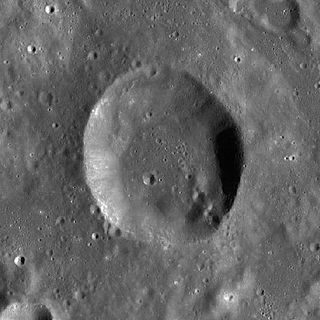
Kuo Shou Ching is a small lunar impact crater that is located in the northwestern part of the walled plain Hertzsprung, on the far side of the Moon. This is an oval-shaped crater that is elongated along the north–south axis. The rim edge is well-defined and not noticeably eroded. The inner walls are simple slopes that descend to the interior floor.
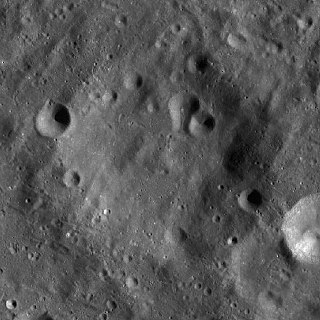
Wan-Hoo is a lunar impact crater that is located on the Moon's far side, and it cannot be seen directly from the Earth. It lies to the southwest of the huge walled plain Hertzsprung, within the outer skirt of ejecta. Just to the south-southwest of Wan-Hoo is the larger crater Paschen, and a little over two crater diameters to the northwest is Sechenov.
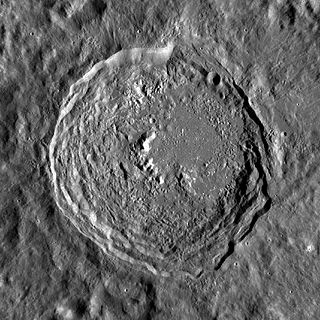
Vavilov is a prominent impact crater that is located to the west of the walled plain Hertzsprung. It is located on the far side of the Moon and cannot be viewed directly from the Earth. About a crater diameter to the northwest is the smaller Chaucer, and farther to the southwest is Sechenov.

Michelson is a crater on the far side of the Moon. It lies along the northeastern outer rim of the huge walled plain Hertzsprung, and to the southwest of the crater Kolhörster.

Sechenov is a lunar impact crater on the far side of the Moon. It lies to the southwest of the huge walled plain Hertzsprung, and to the east-southeast of the crater Timiryazev. To the south-southeast of Sechenov lies Paschen.




